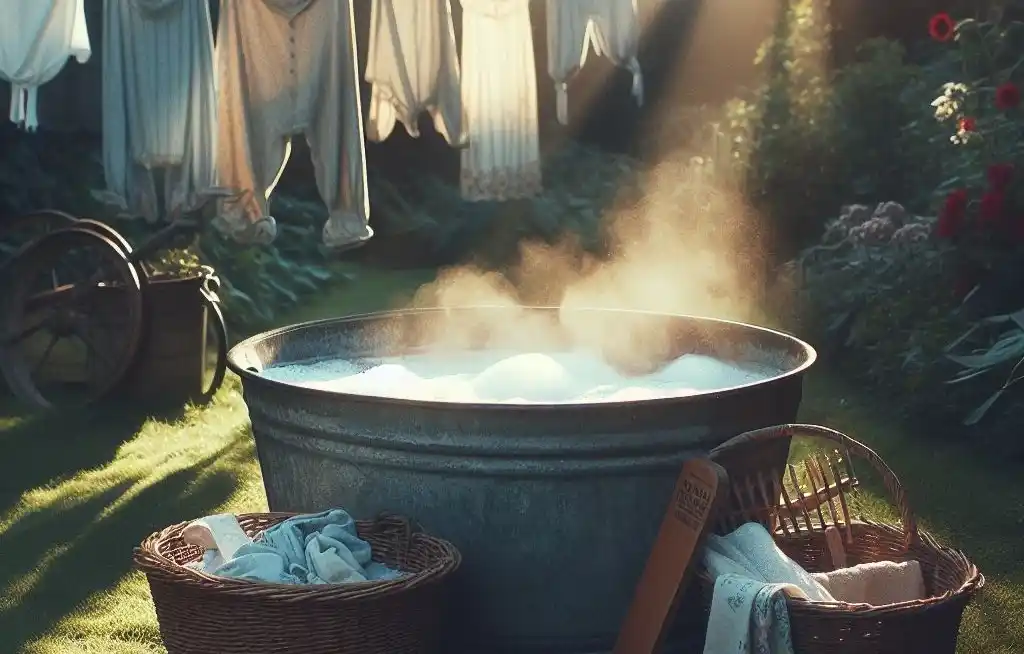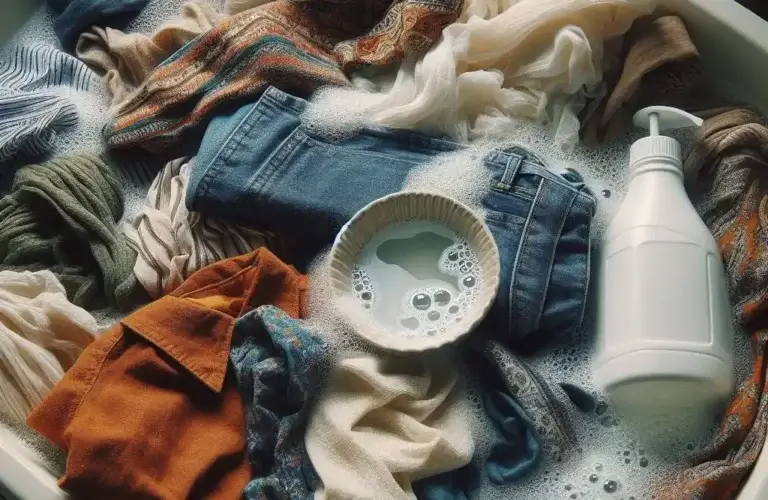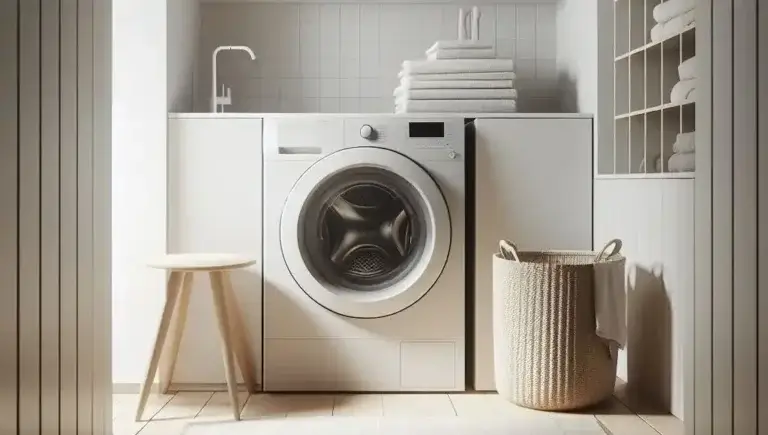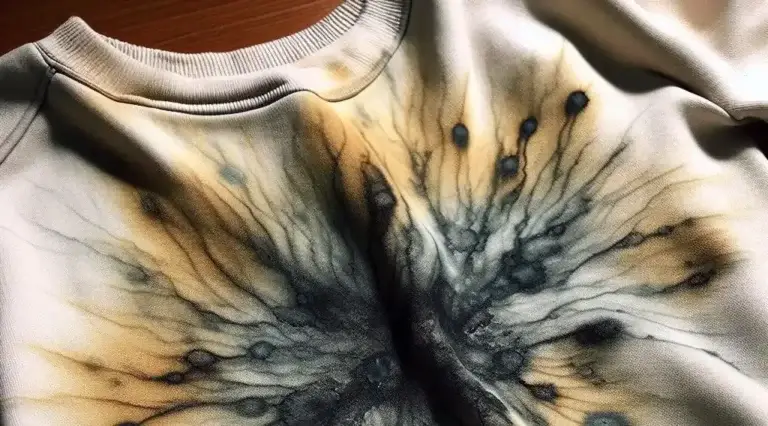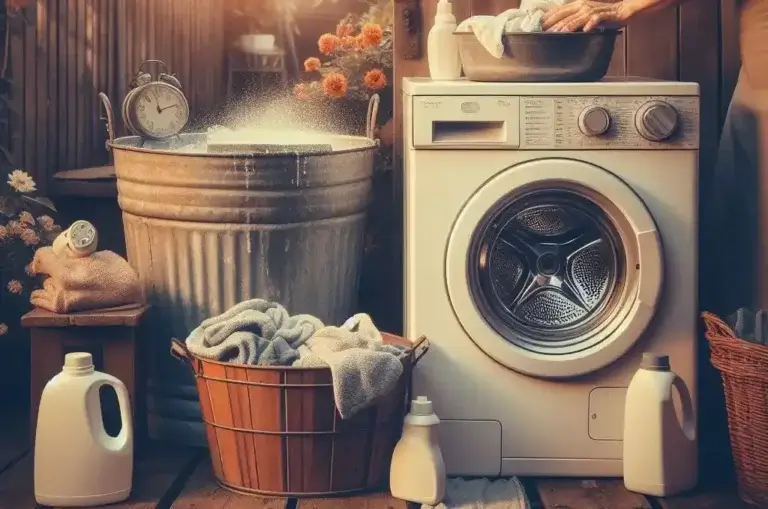What to Use Instead of Laundry Detergent in Washing Machine – Options for Laundry Detergent Substitute
Have you ever found yourself about to do a load of laundry only to discover you’ve run out of laundry detergent? It’s a frustrating situation, but there are several handy substitutes you likely already have in your home.
In this comprehensive guide, we’ll explore what to use instead of laundry detergent in washing machine explaining how well they work, proper usage amounts, and any precautions. From baking soda and vinegar to shampoo and dish soap, you have more options than you probably realized.
We’ll also provide laundry tips when you don’t have detergent, compare homemade vs store-bought detergent, look at natural detergent alternatives, and answer frequently asked questions. By the end, you’ll feel prepared to tackle laundry day with or without your usual detergent.
Table of Contents
Why Laundry Detergent Substitutes Are Useful
Even the most organized among us sometimes reach into the laundry room shelves only to find an empty bottle where our trusted detergent usually sits. Rather than making an emergency store run, it’s good to know what household items can lend a hand.
Substitute options help when:
- You’ve simply run out of laundry detergent unexpectedly
- You’re looking to save money by using products you already have
- You want more eco-friendly laundry solutions
- You need to wash delicates that require gentler cleaning agents
- You have sensitive skin and need hypoallergenic alternatives
- You don’t have time for a trip to buy detergent before you need clean clothes
Luckily many common items can get your clothes clean in a pinch from baking staples to soap and beyond. Let’s look at how these substitutes compare.
Detergent Substitute Overview Comparison Chart
| Substitute | Cleaning Power | Cost | Skin/Environment Friendly | Ease of Use |
|---|---|---|---|---|
| Baking Soda | Moderate | Cheap | Yes | Easy |
| Vinegar | Moderate | Cheap | Yes | Easy |
| Lemon Juice | Light | Cheap | Yes | Moderate |
| Dish Soap | Strong | Moderate | No | Easy |
| Shampoo | Moderate | Moderate | No | Easy |
| Bar Soap | Light | Cheap | Yes | Difficult |
| Washing Soda | Strong | Cheap | No | Moderate |
| Borax | Strong | Cheap | No | Easy |
As you can see, most home items provide moderate cleaning power at an affordable price point compared to detergent. Baking soda and vinegar offer the best blend of effectiveness and natural ingredients. Let’s explore each substitute more in-depth.
What to Use Instead of Laundry Detergent in Washing Machine – A Good Solution

Imagine this: you reach for your trusty laundry detergent, only to find the bottle mockingly empty. Panic sets in, visions of grimy clothes swirling before your eyes. Fear not, laundry warriors! You don’t need fancy chemicals to achieve a spotlessly clean wardrobe.
This guide explores effective alternatives to commercial laundry detergents, proving that clean clothes and eco-friendly practices can go hand-in-hand.
The Natural All-Stars:
- Baking Soda: This kitchen champion packs a powerful punch! Add 1/2 cup to your wash cycle to neutralize odors, boost cleaning power, and soften water. For extra grime-fighting, pre-treat tough stains with a baking soda paste.
- White Vinegar: Don’t be fooled by the scent; vinegar transforms into a magical fabric softener in the rinse cycle. Add 1/2 cup to soften clothes, brighten colors, and remove soap residue. Bonus points for its anti-bacterial properties!
- Lemon Juice: Feeling citrusy? Lemon juice acts as a natural bleach and stain remover, especially for protein-based messes like sweat. Dilute 1/4 cup with water and pre-treat stains before adding to your wash.
Gentle Giants for Delicates:
- Soap Nuts: These wonder pods, harvested from trees, act as natural suds-makers. Toss a handful (5-6) in a muslin bag and throw them in with your delicates for a gentle yet effective clean. They’re reusable for months, making them eco-friendly champions.
- Bar Soap Shavings: Grate a mild bar soap (like Castle) into flakes and add them directly to the drum. The gentle suds are perfect for hand washables and woolens, preventing shrinkage and preserving their delicate fibers.
Heavy-Duty Helpers:
- Borax: This mineral compound tackles tough stains and grime with ease. Add 1/4 cup to the wash cycle for extra oomph against oily stains or greasy workwear. Just remember, borax can be harsh on delicates, so use it sparingly.
- Oxygen Bleach: For stubborn stains and brightening whites, oxygen bleach shines. Follow the package instructions for dosage, but be careful with colored fabrics as it can cause fading.
Remember:
- Test before you toss: Always test any alternative on a hidden area of the fabric before committing to a full wash.
- Adjust for water hardness: If your water is hard, add a bit more baking soda or borax to enhance cleaning power.
- Go natural, but go cautious: While these alternatives are generally safe, avoid mixing them for unpredictable reactions.
Bonus Tip: For extra freshness, add a few drops of essential oils like lavender or tea tree to your rinse cycle.
Baking Soda as a Substitute
Baking soda, also known as sodium bicarbonate, is a popular staple known for its wide range of household uses. For laundry, it serves as a water softener and deodorizer that lifts dirt and stains from fabrics.
It’s best suited for light to moderately soiled clothing and works well in regular and high-efficiency washers. Here’s how to use it:
How to Use
For a top-loading machine, add 1/2 cup baking soda directly into the wash basin before loading clothes. Front-loading machines may require up to 1 cup. Use baking soda alone or boost by adding a liquid like vinegar.
Pros
- Extremely affordable (often less than $1 per box)
- Readily available in any grocery store
- Gentle on skin
- Environmentally friendly
- Works on many common stains
Cons
- Not as strong on grease/oils compared to detergents
- Can leave residue if using too much
- Requires an acidic booster for optimal results
Considerations
Since baking soda works best in alkaline water, its effectiveness depends partially on your tap water’s mineral content. Hard water reduces results. Combine with vinegar or lemon juice to create a chemical reaction that dissolves better.
Borax can be used to replace baking soda at a 1:2 ratio if desired, though take caution with borax as it can be harsher on the skin.
Vinegar as a Substitute
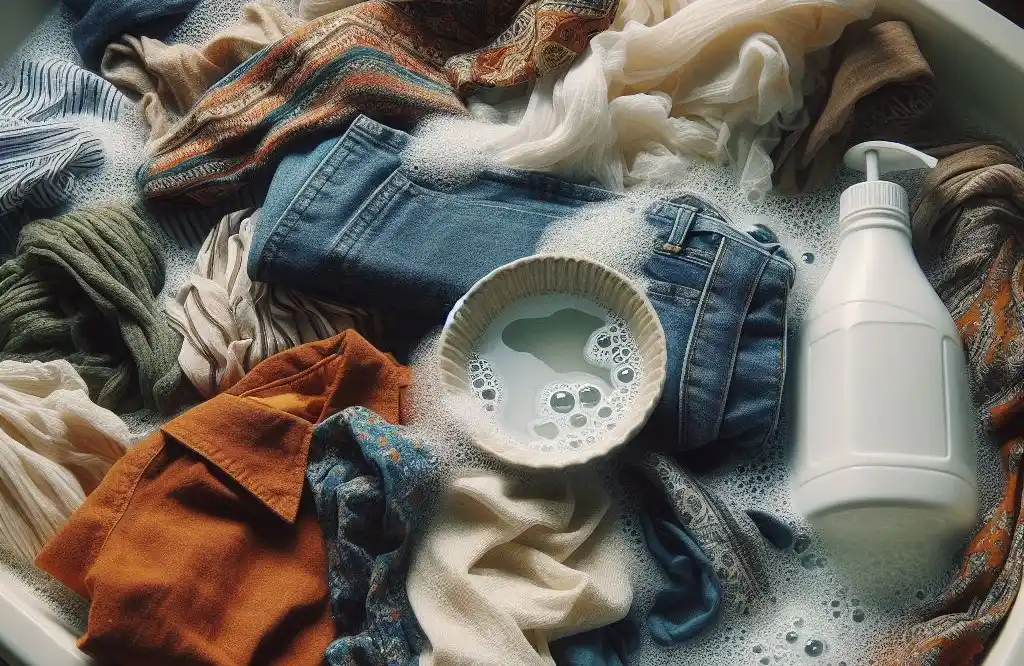
Distilled white vinegar is another economical cleaning staple that removes grime and brightens laundry. The acidic acetic acid cuts through buildup, minerals, and residue.
It works well for small loads of lightly soiled clothing. Use with other boosters like baking soda, lemon, or soap for heavier dirt.
How to Use
Add 1 to 1-1/2 cups vinegar directly into the basin or detergent dispenser before starting the wash cycle depending on load size. Shake directly onto stained areas as needed before washing.
Pros
- Extremely affordable (often $2-$3 per gallon jug)
- Sold in any grocery store
- Removes odors
- Fabric softening properties
- Non-toxic and eco-friendly
Cons
- Can have a strong smell if used too much
- Requires an alkaline booster for best cleaning
- Not as effective on heavyweight soiling
Considerations
White distilled vinegar is best. Avoid darker vinegars like red wine or balsamic as they could stain. The vinegar smell dissipates as clothes dry but can linger in machine hoses. Run an empty “rinse and spin” cycle after to clear residual taste/smell.
Lemon Juice as a Substitute
Similar to vinegar, the acidic nature of lemon makes it useful for cutting grease and brightening laundry. It leaves a light, fresh citrus smell too.
Lemon works for lightly soiled loads. Use with baking soda or another cleaner for heavy stains.
How to Use
Juice 3-4 lemons and add the strained juice to the wash basin before adding clothes. Can also mix with baking soda to boost efficacy. Soak stained spots with lemon juice before washing.
Pros
- All-natural acidic cleaner
- Pleasant lemon scent
- Affordable if you have lemons on hand
- Can help bleach and whiten
Cons
- Requires having fresh lemons available
- Takes more effort than vinegar or baking soda
- Not as potent on tough stains
Considerations
Make sure to strain as pulp and seeds could clog machine parts. Lemon may not remove bad pet or smoke odors. Like vinegar, its acidity works best with an alkaline booster.
Dish Soap as a Substitute
Dishwashing liquid contains surfactants that cut through kitchen grease, so it makes sense it can tackle laundry dirt and oils as well. Any basic scent-free variety works.
Dish soap provides robust cleaning for heavily soiled items in small batches when lacking detergent. Limit use to avoid buildup.
How to Use
Add 2-3 tablespoons (up to 1/4 cup for large loads) dish soap to wash basin before adding clothes. Agitate extra onto stained areas. Use sparingly and rinse thoroughly.
Pros
- Powerful grease-cutting ability
- Sold at any grocery store
- Very affordable per bottle
Cons
- Risks of soap buildup on clothes and machine
- Often filled with synthetic ingredients
- Overuse damages fabric elasticity over time
- Not environmentally friendly
Considerations
Limit dish soap to small loads and use sparingly. It can harm delicates like spandex/Lyrca blends or wool with overuse. Vinegar helps cut any soapy residue.
Thoroughly rinse clothes after washing. Run empty “rinse and spin” cycles in the machine to prevent lingering bubbles or film, especially around gaskets.
Shampoo as a Substitute
Body wash and baby shampoo also contain surfactants that suspend soils. Their formulas tend to be gentler than dish soap while still effective on everyday dirt and stains.
How to Use
Add 1/4 to 1/3 cup shampoo per average load directly into the machine basin or detergent dispenser before adding clothes. Agitate extra onto any stained areas first.
Pros
- Made to be gentle on the skin
- Pleasant smell
- Good cleaner for lightly soiled items
- Easy to buy at any grocery/drug store
Cons
- Not as heavy-duty as dish soap on tough grease stains
- Can still leave residue with overuse
- Contains synthetic fragrances and ingredients
Considerations
As with dish soap, thoroughly rinse washed items and run a clear “rinse and spin” cycle afterward to prevent shampoo buildup which causes garments to wear out quickly over time.
Bar Soap as a Substitute
Plain bar soap like Ivory or Castile contains fats or plant oils to lift dirt away. They work best on lightly used items without heavy staining. Effectiveness varies by soap brand.
How to Use
Grate a few tablespoons of soap flakes into the machine basin using a cheese grater before filling it with clothes. Can also rub the bar directly on stains first.
Pros
- Uses simple classic ingredients
- Very affordable per bar
- Available at any supermarket or pharmacy
Cons
- Hand-grating flakes take more effort
- Plant oils can leave residue leading to the buildup
- Less effective than synergistic cleaners
Considerations
As with all substitutes, rinse thoroughly after washing. Soaking clothes in vinegar after using soap helps remove any lingering oils. Avoid soaps with strong fragrances or moisturizers.
Washing Soda as a Substitute
Washing soda or sodium carbonate is an alkaline water softener and solvent. It works well lifting dirt and oil-based stains but can be harsh on skin and fabrics.
Use for occasional deep cleaning maintenance, not daily wear. Rinse thoroughly after use.
How to Use
Add 1/4 to 1/2 cup washing soda to wash water for average loads. Boost cleaning by mixing with borax at a 2:1 ratio before adding to wash water.
Pros
- Readily dissolves dirt, grease, and oil
- Sold as a laundry booster additive
- Very affordable per box
Cons
- Can damage fabrics and fade dark clothes
- Harsher on skin than other substitutes
- Requires careful measuring to avoid residue
Considerations
Washing soda is more alkaline than baking soda. Take care when using on delicates and make sure to always rinse clothes thoroughly after washing. White vinegar helps remove any soda residue.
Borax as a Substitute
Like washing soda, borax is an alkaline mineral salt that dissolves and lifts away grime. Be especially careful using sparingly on delicates. Needs ample rinsing after washing.
How to Use
Use 1 to 2 tablespoons of borax per average load. Can add up to 1/2 cup for heavily soiled batches. Mix with washing soda to boost cleaning.
Pros
- Strong cleaner good for grease and stains
- Sold as a laundry booster
- Very cost-effective per box
Cons
- Can damage and fade fabrics with overuse
- Toxic if ingested so keep containers sealed
- Can irritate skin – wear gloves
Considerations
Make sure to pretreat any badly stained areas first before washing to avoid harsh rubbing that can damage the fabric. Vinegar again helps neutralize and remove alkaline residue.
Other Emergency Substitute Options
While all the above work decently well in a pinch, here are a few other wildcard items you may have available:
- Hydrogen peroxide – As an oxidizer, peroxide helps lift stains and whiten laundry similar to bleach products but more naturally. Use 1/4 to 1/2 cup per average load.
- Hair conditioner – Silicones help soften water allowing dirt to release. Use 1/4 to 1/3 cup per load. Helps with static.
- Club soda – The carbonation acts as a solvent to pretreat stains. Pour directly on the fabric.
- Salted water – The salt ions act as electrolytes to separate dirt. 1-2 tablespoons per load softens water.
- Clear alcohol – Disinfects and removes some stains. Dilute rubbing alcohol with water first before using it sparingly.
The key is getting the fabrics fully soaked and allowing ample agitation time for any of these to work when lacking detergent. They may require an extra rinse cycle afterward as well to remove any lingering residues.
Laundry Tips When You Don’t Have Detergent
If you still want to wash clothes without a proper detergent substitute handy, try these laundry hacks to help salvage your garments:
- Soak heavily stained areas beforehand – Gently blot problem spots with dish soap, shampoo, or baking soda. Let sit briefly before washing.
- Wash smaller loads – Fewer items allow better movement and cleaning action without detergent.
- Use warmer wash water – Heated water better dissolves soils. Take care with delicates and darks.
- Add towels or rags – Throwing in additional items gives an abrasive surface area for agitation cleaning.
- Wash with double rinse cycle – Detergent helps suspend soils. Without it, oils and dirt will re-deposit without thorough rinsing.
- Line dry in sunlight – The sun’s UV rays have natural bleaching and deodorizing effects.
- Repeat stain treatment after washing – Check for any lingering spots that need repeat attention after clothes dry.
When first trying these, inspect carefully afterward for any cleaning issues before returning items to regular use.
Homemade vs Store-Bought Laundry Detergent
Homemade laundry soap has seen a resurgence as people aim for more natural cleaning solutions. Recipes tout mixing baking soda, soap, and washing soda for an effective DIY cleaner.
But how does homemade compare to commercial detergents in terms of advantages and disadvantages? Let’s evaluate the key considerations.
Cost Comparison
Homemade can be cheaper using ingredients from 25 cents to $1 per load compared to 10 cents up to 50 cents for store-bought varieties. Making your own lets you control the exact formula.
Ingredient Transparency
Commercial brands use chemical cleansers that fully dissolve in water well but leave residues. Homemade formulas rely on more familiar alkaline salts and oils that may leave films requiring extra rinse cycles.
Cleaning Ability
The mass-market detergents often include whiteners and brighteners for better stain removal. Homemade cleaners it but may require more mechanical wash effort.
Convenience Factor
Readymade detergents win for convenience. But taking a bit of time to mix up a batch of homemade cleaner isn’t too arduous for most DIYers. And there’s satisfaction in knowing exactly what’s used.
Environmental Impact
Both homemade and commercial detergents end up sending chemical runoff down drains that affect waterways and wildlife to some degree. But homemade using all-natural ingredients has a bit less ecological consequence.
Fragrance
You’ll miss the artificial perfumes of store-bought brands with DIY cleaners, but can add natural essential oils to homemade formulas for a light scent if desired.
On balance, convenience slightly favors commercial detergents for their ease of use and predictable performance. But more natural homemade versions appeal for their lower cost and healthier ingredients. Try making your own to see if it fits your laundry needs.
Natural Laundry Detergent Alternatives
For those wanting to use plant-based hypoallergenic cleaners, several commercially available natural detergents provide that option:
Charlie Soap Laundry Powder – Mix with water into a paste and add to wash basin. All-natural ingredients clean effectively while safe for septic systems.
Molly’s Suds – Powder packs well for travel/dorms. Contains natural soda ash and oils. Choose scented or fragrance-free.
Grab Green – Powder made from coconut oil soap, essential oils, and plant enzymes. Works in all machines.
Common Good – Highly-rated plant-based powder using food-grade ingredients like sugar, soy, and coconut.
BioKleen – Premium laundry powder harnessing sustainability science for natural cleaning. Good value for the price.
These alternative natural brands rate well from consumers while keeping clothes fresh using gentle hypoallergenic plant and mineral formulations.
Frequently Asked Questions
What is the best homemade laundry detergent recipe?
The classic DIY cleaner recipe calls for washing soda, bar soap grated into fine flakes, and borax or baking soda. Mix 1 cup each ingredient pulsed together into powder to add per wash load. Customize ratios to tweak cleaning strength.
What natural ingredients sanitizer laundry effectively?
Vinegar or lemon juice boosts germ-killing, especially for those with skin sensitivities. Tea tree, thyme, rosemary, lavender, and clove essential oils also have antimicrobial properties when added sparingly to any natural cleaner.
How much vinegar or baking soda do you put in a HE washer?
For high-efficiency front-loading washers, stick to 1/2 to 3/4 cup vinegar or baking soda per average load size to avoid overflowing the dispenser compartment. These machines use less water requiring lower additive amounts.
Conclusion: Beyond the Bottle – A Laundry Revolution
Empty laundry detergent bottles may signal despair, but they also present an opportunity. An opportunity to break free from chemical dependence and embrace a cleaner, greener way to wash. This guide has shown you that effective laundry alternatives exist, waiting to be unleashed from pantries, cupboards, and nature’s own bounty.
Remember, replacing commercial detergents isn’t just about saving money or minimizing environmental impact. It’s about reclaiming control, rediscovering the power of simple ingredients, and fostering a connection with your clothes and the world around you. With each natural wash, you’re not just getting clean clothes, you’re choosing sustainability, gentle care, and a touch of personal satisfaction.
So, the next time the dreaded detergent drought hits, don’t panic. Open your cupboards, embrace the power of baking soda, vinegar, and soap nuts, and watch your laundry shine – naturally. Share your discoveries, experiment with new combinations, and join the revolution of conscious cleaning. Let’s prove that clean clothes and a healthy planet are not mutually exclusive, but rather two sides of the same sparkling coin.
Go forth, laundry warriors, and wash with confidence, knowing that nature’s bounty has your back (and your whites).
This conclusion ties up the article’s themes, reiterates the benefits of natural alternatives, and encourages readers to participate in a wider movement toward sustainable laundry practices. It’s concise, inspirational, and leaves a lasting impression.
I hope this comprehensive conclusion helps complete your article! Feel free to adapt it to your specific tone and style.

